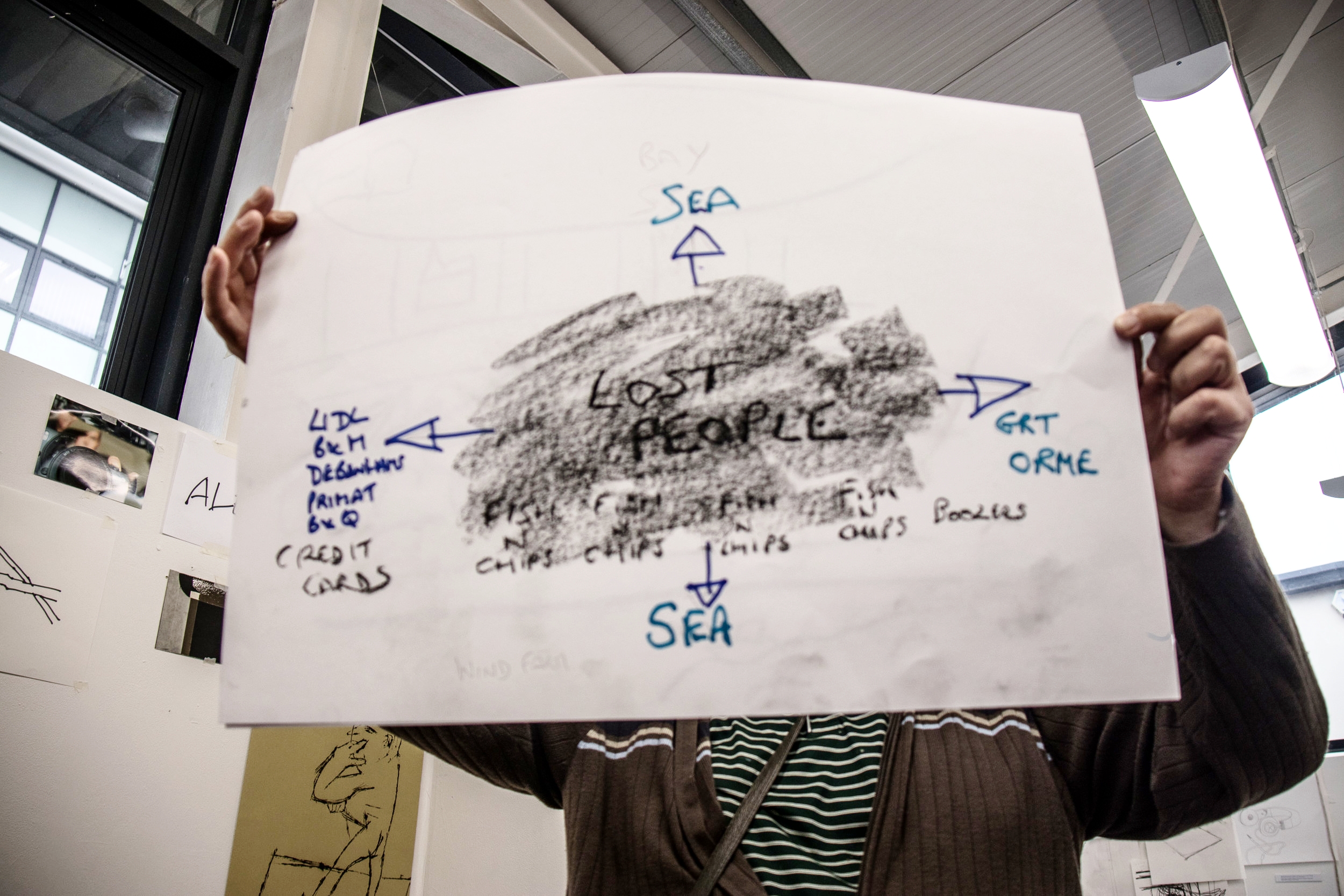There are four walks that explore Llandudno as a place in transition. You could browse the maps from home or use it on your phone as a guide as you walk around (for this, click on the 'mobile version' once the map loads).
Sabine Cockrill - Culture! Action! Llandudno! Sabine describes her work, questions and ideas for arts and culture based regeneration in Llandudno.
Clive Wolfendale - the REAL Llandudno. Clive uses his experience as Conductor of the Town Band, director of CAIS and Deputy Chief Constable of North Wales police (amongst other roles) to make the case for regeneration that doesn't forget who Llandudno really serves...
Trine Moore - graveyards and renewal Some radical thoughts for the future, while taking in St Hilary's Churchyard and Llanrhos Lawn Cemetry
Jane Matthews - Ponderings on Pier and Prom, linking history to now, and a cautionary note on the need for regeneration.
David Owen - a performative return after 45 years [to come]
Some thoughts about Llandudno in transition
Llandudno is a Victorian creation, built by the mighty Flintshire based Mostyn estate to maximise returns on their newly acquired land (secured through ‘allocation’ of common land to the Mostyns following the Enclosure Act). The village that was there, on and nestling in the shadow of the Orme, and the houses on the Morfa, were cleared to make way for a typically Victorian vision: A sea-side resort, bringing fresh sea air to the lungs of visitors from the industrial North West (of England), together with lashings of entertainment.
In many ways this Victorian vision - of making profit from visitor-fuelled activity - still holds a strong grip on the town: stronger certainly than the sandy foundations on which the town was built. There are signs of confidence from the likes of Primark, Premier Inn and Pizza Express, that there is still profit to be made from Llandudno.
And yet there are also signs of cracks appearing in the neoliberal edifice. Some assumptions no longer stand: once mighty buildings stand empty, climate disintegration and sea level rise (and water lapping in people's cellars) put a massive question mark over whether Llandudno will even exist in 10, 20, 50 years. Even the beach is disappearing.
Big business, big developers are seen by many as the only hope: Leave it to the companies to rescue the place (with Mostyn estate as shadowy 'curators' of their creations). Some, like Dillans and Wetherspoons, are restoring and re-purposing buildings, bringing life back into the fabric. Others, like Travelodge and now Premier Inn, are erasing existing buildings before 'recreating' their edifice, with structures that (are meant to) look like the original, but with interiors more suited to modern needs.
This is just more of the same. It is perhaps better than letting things rot, but it is a temporary fix. There are signs among the demographics of people who live here (whether indigenous or incomer), and the people who visit that the town is struggling behind the edifice of "peaceful" "clean" "unspoilt" and "not like Blackpool". People who can make a living here, or who have already made a living, really love Llandudno. But who don't fit into - or who can't profit from the existing economic model, like the homeless, those on low incomes and young people, are increasingly marginalised. They have less and less space.
In our workshop with students at Coleg Llandrillo (see the blog), it was striking just how much their personal maps of Llandudno just focused on shopping. And the (out of town) cinema. A place for old people and seagulls. No-one mentioned it as a place ofcreativity, innovation and dynamism and getting fit for the future: an exciting place to connect with.
And yet there are some glimpses of that sort of energy: Providero, Acme studios, CALL and Llawn. My walk with Sabine Cockerill of CALL, visits sites and places she is thinking about in a new way, re-purposing places like Tedder House and y Tabernacl. My walks with Trine and with Francesca too. And work by people like Brenda Hewitt of Hope Restored at the fringes, building support for homeless people despite the state's best efforts to make life unbearable.
More on this theme to come, I think!




























































































































































































